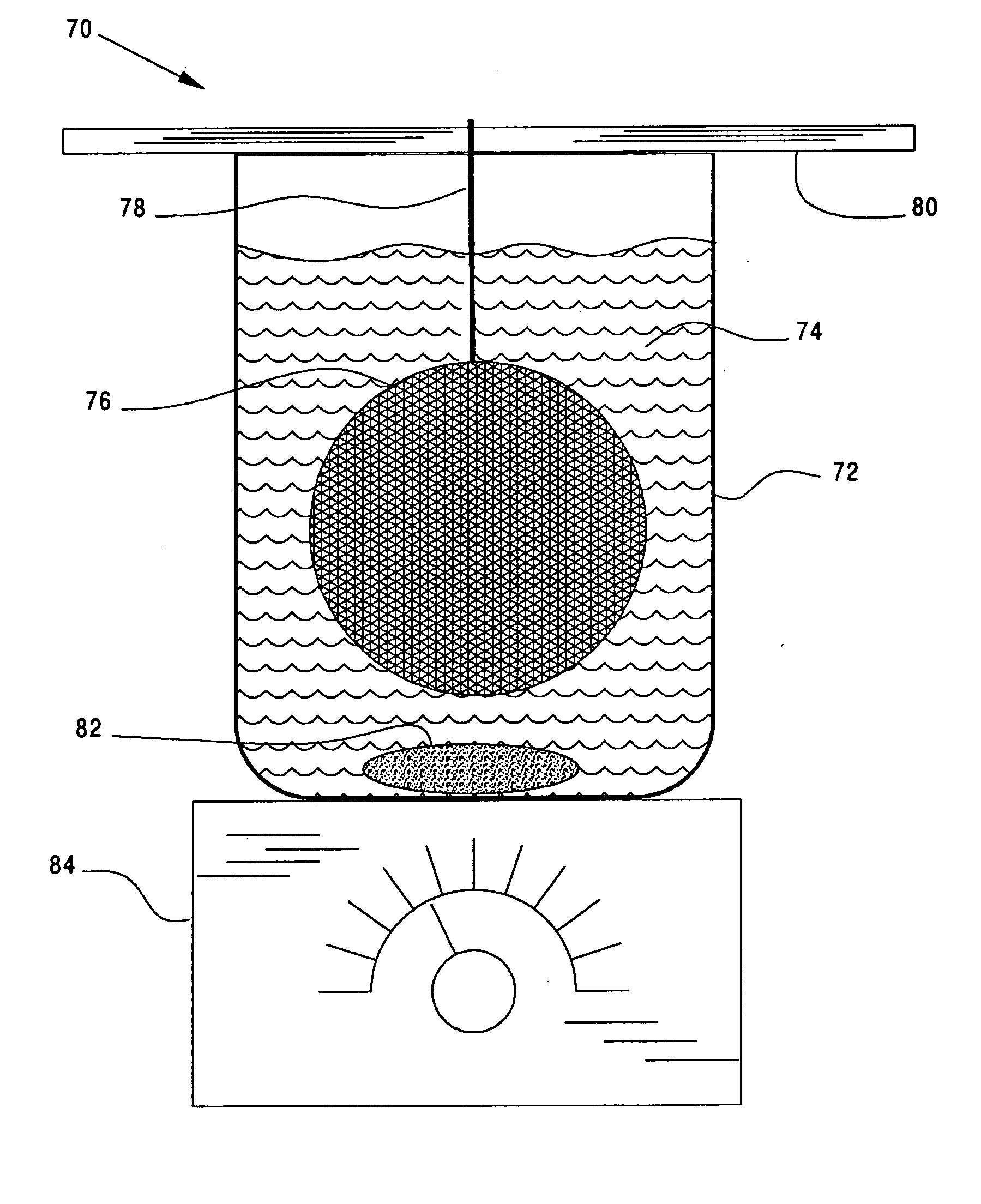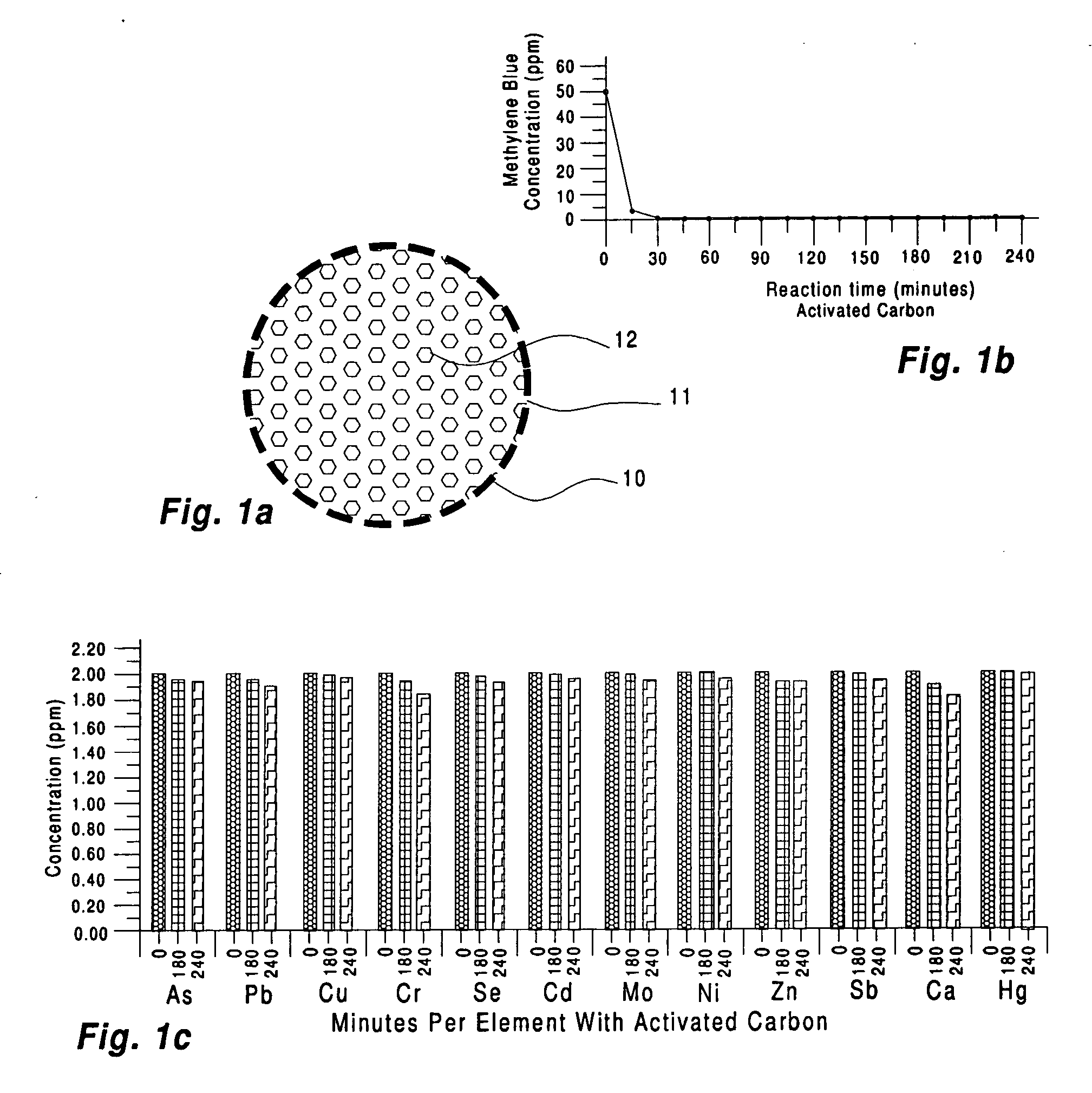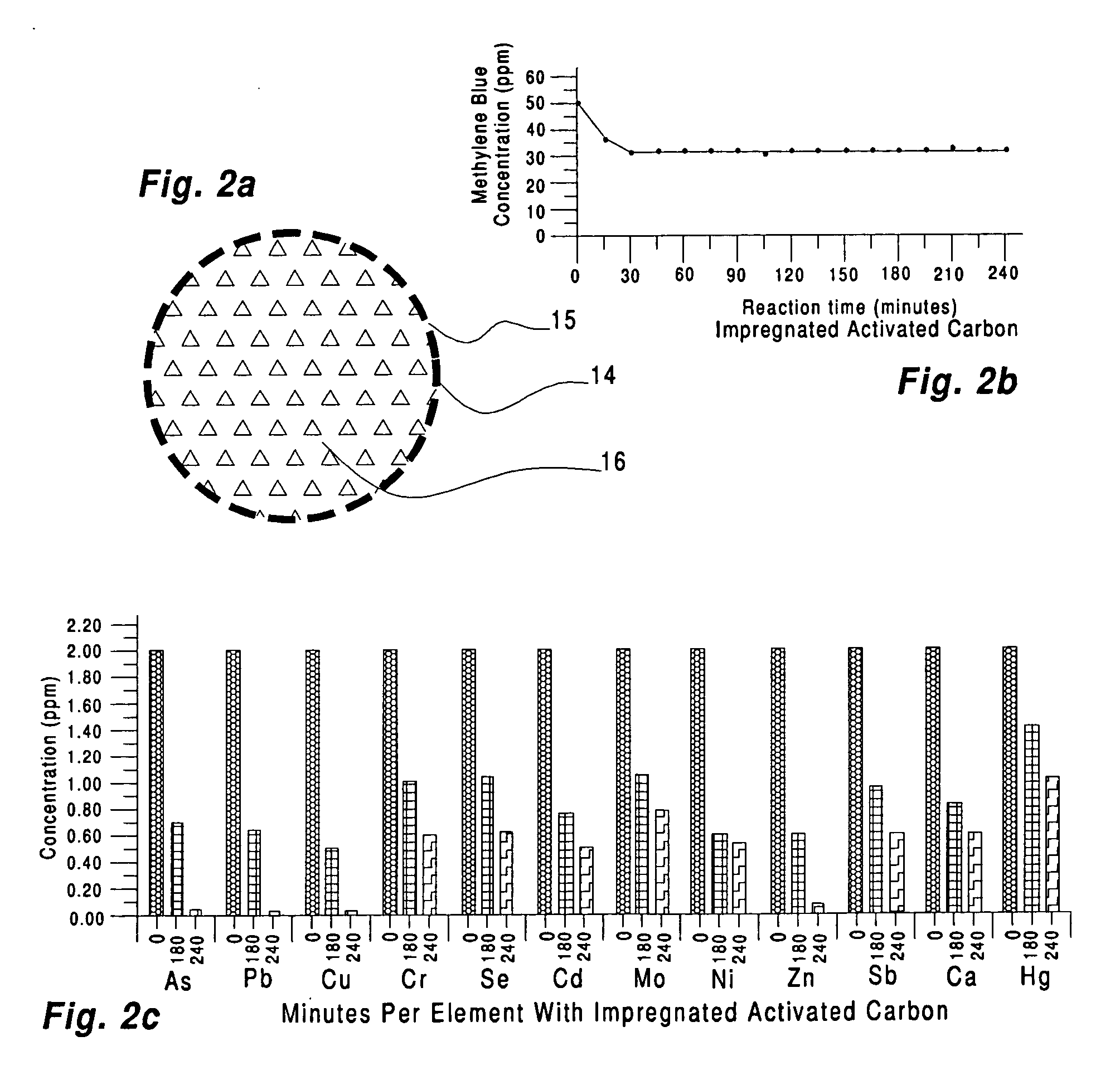In situ water treatment
a technology for in situ water treatment and packaging, which is applied in water treatment compounds, water/sludge/sewage treatment, chemical instruments and processes, etc. it can solve the problems of slow flowing regions, unattended operation of abatement packages, and inability to install capital, etc., and achieves the effect of convenient production, handling, and transportation
- Summary
- Abstract
- Description
- Claims
- Application Information
AI Technical Summary
Benefits of technology
Problems solved by technology
Method used
Image
Examples
example 1
See FIGS. 1a-1c
Case:
Materials of construction:polycarbonate, water insolubleShape:generally sphericalSize:about 8 centimeters in diameterPerforations:about 2 millimeters in diameter
Functional agents:
Activated carbon, about 120 grams in each case, granulated with an average particle size of approximately 4 to 5 millimeters, surface area of about 1000 square meters or more per gram, packing density of from about 120 to 150 grams per liter, and neutral pH. This activated carbon is available under the designation “BA” from Ajinomoto Fine-Techno Co., Inc. Activated Carbon Division.
Water:
Volume:about 200 litersTemperature:about 20 degrees centigradepH:about 6.8Flow rate:about 380 liters per hour
Pollutants:
Methylene Blue,about 50 parts per million initial concentrationAsabout 2.00 parts per million initial concentrationPbabout 2.00 parts per million initial concentrationCuabout 2.00 parts per million initial concentrationCrabout 2.00 parts per million initial concentrationSea...
example 2
See FIGS. 2a-2c
Case:
Materials of construction:polycarbonate, water insolubleShape:generally sphericalSize:about 8 centimeters in diameterPerforations:about 2 millimeters in diameter
Functional agents:
Impregnated carbon, about 120 grams per case, powder encased within water permeable paper bags, about −12 +80 mesh (less than about 1.3 millimeters average diameter), surface area of about 1,000 square meters per gram, packing density of about 120-150 grams per liter, and neutral pH. The carbon was impregnated and treated so as to be adapted to form a complex with heavy metal ions. This impregnated carbon is available under the designation “GS-B” from Ajinomoto Fine-Techno Co., Inc. Activated Carbon Division.
Water:
Volume:about 200 litersTemperature:about 20 degrees centigradepH:about 6.8Flow rate:about 380 liters per hour
Pollutants:
The same as Example 1
The body of water was confined in a tank and was continually circulated by pump so that the body of water was continuousl...
example 3
See FIGS. 3a-3c
Case:
Materials of construction:polycarbonate, water insolubleShape:generally sphericalSize:about 8 centimeters in diameterPerforations:about 2 millimeters in diameter
Functional agents:
Chelate resin in the form of porous polymer beads encased within a porous paper bag with a high wet tear strength, 10 grams per case, average particle size of about 0.3 to 2 millimeters, packing density of about 720 grams per liter, surface area of approximately 1.8 square meters or less per gram, specific gravity of about 1.1, available from Ajinomoto Fine-Techno Co., Inc. Activated Carbon Division under the designation “SB”.
Water:
Volume:about 200 litersTemperature:about 20 degrees centigradepH:about 6.8Flow rate:about 380 liters per hour
Pollutants:
The same as Example 1
The body of water was confined in a tank and was continually circulated by pump so that the body of water was continuously flowing through the tank. The test setup and operation were as described in Exampl...
PUM
 Login to View More
Login to View More Abstract
Description
Claims
Application Information
 Login to View More
Login to View More - R&D
- Intellectual Property
- Life Sciences
- Materials
- Tech Scout
- Unparalleled Data Quality
- Higher Quality Content
- 60% Fewer Hallucinations
Browse by: Latest US Patents, China's latest patents, Technical Efficacy Thesaurus, Application Domain, Technology Topic, Popular Technical Reports.
© 2025 PatSnap. All rights reserved.Legal|Privacy policy|Modern Slavery Act Transparency Statement|Sitemap|About US| Contact US: help@patsnap.com



